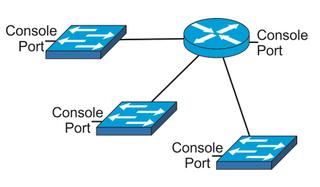What Is Software-Defined Networking?

Wes Simpson
Software-defined networking is a hot topic in data networking today. This technology was created to separate the control of networking resources from hardware devices in the same manner that data storage and processing power have been virtualized over the past decade. By allowing software applications to control network configurations, SDN systems enable a rich variety of network topologies and applications that would be difficult or impossible to implement on traditional data routers and switches.
TREND TO ABSTRACTION
Abstraction and virtualization have been powerful trends in information technology for the past couple of decades. The basic concept is to replace physical devices with abstract or “virtual” versions that perform the same functions with greater flexibility. This removes the dependency that a particular data item or program has on a specific piece of hardware.
One prime example of the trend towards abstraction/virtualization is the rise of storage networks, including storage area networks and network attached storage systems, which are used throughout the broadcast industry today. With these systems, individual workstations no longer need to locally store all of the data required for operation; instead, files can be retrieved from a server whenever they are needed.
Similarly, processing functions are becoming abstracted though the use of virtual machines and cloud services.

Fig. 1
SDN INNOVATIONS
One important feature of SDN technology is the separation of the control plane of a datacom network from the packet/frame processing hardware. In a traditional datacom network, each device acts autonomously, having its own individual control function that defines how the hardware will process each IP packet or Ethernet frame. These devices are usually configured using a console port on a switch or router by means of a command line interface (CLI). If packet/frame routing rule changes are required across a network made up of autonomous devices, every affected unit must be individually reconfigured using the CLI or another tool. In Fig. 1, three switches are connected through a router, with each device having a separate console port that is used for configuring packet/frame forwarding rules.
Within an SDN, each device is no longer configured in isolation, and configuration changes can be performed across multiple devices simultaneously. As shown in Fig. 2, a common control plane has command of all the devices in the network. Furthermore, the functions of the networking devices can be controlled by software applications, through an application programming interface (API).

Fig. 2
Control can be centralized in a single device or distributed across multiple devices, but the net effect is the same; the control function is abstracted from the physical devices themselves, greatly increasing the flexibility of the underlying network.
SDN technology opens up many possible network capabilities, including rapid network reconfiguration to accommodate changing processor loads; the ability to quickly recover from failures; and the ability to create new configurations on demand.
Usage of some network protocols such as Spanning Tree can be reduced or eliminated by common control of multiple switches and routers. New capabilities can be instituted, such as the ability to dynamically change switch configurations based on packet headers. Plus, all of these features can be placed under control of software applications, allowing completely new types of network functions.
VIDEO ROUTING WITH SDN
Broadcasters should already be familiar with the concept of having control planes separated from a device, and in fact could be considered pioneers in this area. For years, large video routers (both analog and SDI) have been reconfigured on the fly from remote control panels or software interfaces, where one push of a button or a single command from an automation system could change the route of SDI signals spanning multiple devices.
In fact, many SDI routers today are sold by one vendor and dynamically reconfigured by automation systems from another vendor, which is a classic example of a separate control plane.
However, before SDN technology is hailed as the panacea for converting IP routers and switches into SDI routers, the issues of switching time and switch timing need to be considered. Switching time relates to the amount of time needed to change the path of a signal through a network in response to a command.
Switch timing refers to the accuracy of synchronization of clocks across multiple devices. Both need to be considered when performing real-time operations, such as switching between SDI video signals being carried through the network.
It is entirely possible to configure an SDN to switch between two packet streams within the SMPTE RP-168 vertical interval switching point, however both switching time and switch timing must be precisely controlled, as the acceptable switching window is only a few microseconds in duration.
Thomas Edwards, vice president of engineering and development at Fox Networks Group, demonstrated just such a system during VidTrans 2014. This system creatively used packet headers applied at video sources and multiple routing rules to dynamically switch live video streams.
As a relatively new technology, SDNs are making their way into corporate datacenters alongside virtualized storage and processing. Most broadcasters will first see SDNs in these areas, but don’t be surprised if SDN technology helps to drive adoption of all-IP video routing sometime in the next few years.
Wes Simpson is an industry consultant and author of “Video Over IP, Second Edition,” from Focal Press. Your comments are welcome to wes.simpson@gmail.com.
Get the TV Tech Newsletter
The professional video industry's #1 source for news, trends and product and tech information. Sign up below.
Wes Simpson is President of Telecom Product Consulting, an independent consulting firm that focuses on video and telecommunications products. He has 30 years experience in the design, development and marketing of products for telecommunication applications. He is a frequent speaker at industry events such as IBC, NAB and VidTrans and is author of the book Video Over IP and a frequent contributor to TV Tech. Wes is a founding member of the Video Services Forum.

